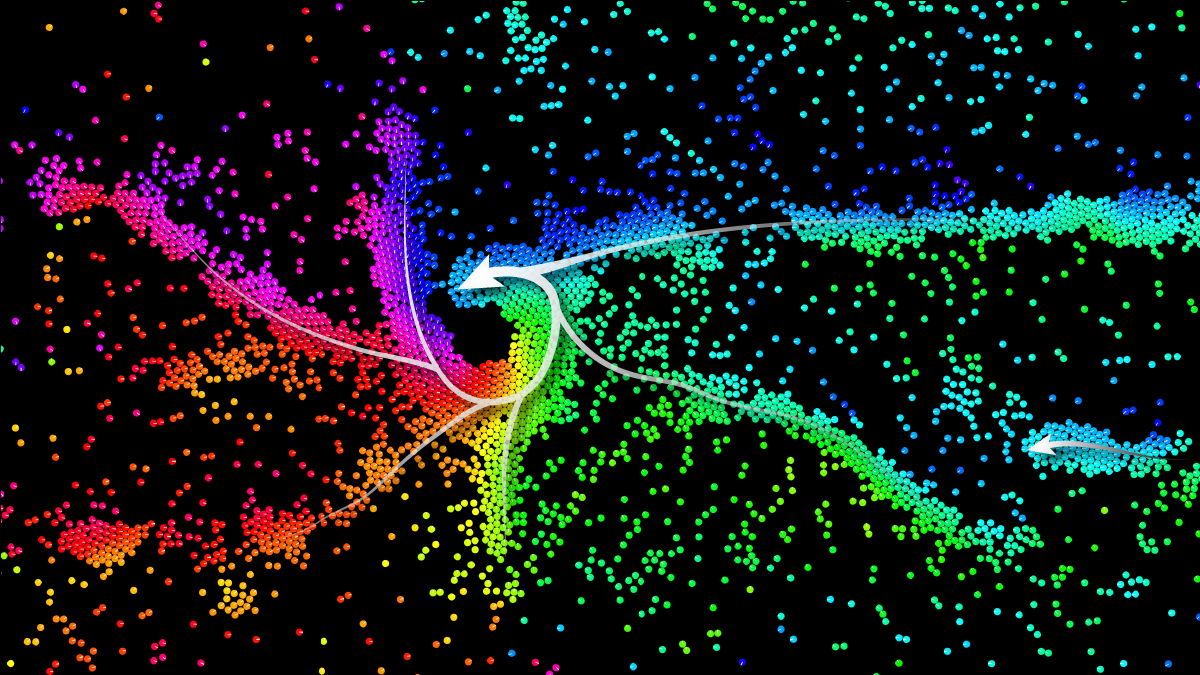Multi-scale organization in communicating active matter
Alexander Ziepke, Ivan Maryshev, Igor S. Aranson, and Erwin Frey
 How are identical unsupervised units able to collectively self-organize an efficient aggregation process in which individual elements are guided towards selected locations so as to form ordered and information-rich structures?
How are identical unsupervised units able to collectively self-organize an efficient aggregation process in which individual elements are guided towards selected locations so as to form ordered and information-rich structures?
The formation of complex structures is fundamental to life. Individual building blocks must be able to assemble into aggregates with higher complexity at length scales that exceed the size of individual particles by orders of magnitude. The term ‘active matter’ refers to a class of systems that exhibit this kind of behavior, which underlies many self-assembly processes in biology and physics that give rise to large-scale self-organized structures based solely on local interactions between identical self-propelled particles.
In recent years, several scientific breakthroughs have demonstrated that principles of active matter can indeed account for the emergence of diverse macroscopic order, including polar bands and nematic lanes in actin motility assays, defect-driven motion in bacterial systems, and chiral flocking states in active magnetic rollers.
However, in the absence of an external control system, the efficient and robust emergence of complex order requires intrinsic, effective control mechanisms based on the principles of self-organization. Inspired by biological systems such as social amoebae, we propose a novel class of models in which the ability of self-propelled agents to communicate by locally detecting and relaying signals by means of an internal decision-making machinery leads to efficient, self-controlled aggregation and collective, targeted formation of large-scale and information-rich structures.
In this collaboration with Professor Igor Aranson from Penn State University, we introduce the new paradigm of communicating active matter for which local decision-making in response to a signal and transmission of information lead to collectively controlled self-organization. Communicating active matter exhibits new collective dynamic states that have previously been observed only under very specific constraints on particle interactions or in the presence of external guidance cues or stimuli.
It is the interplay of self-propulsion and information processing that leads to hierarchical self-organization which extends over multiple length scales by leveraging distinct types of collective dynamic states.
We identify the decision-making machinery of the individual active agents as the driving force for the collective control of self-organization.
Our model significantly extends the successful concept of active matter systems by incorporating the interplay of self-propulsion and information processing and transmission via a signaling mechanism. This opens a completely new field with profound implications for the understanding of biological systems and provides fundamental insights relevant to the design of self-organizing functional microrobots or interacting unsupervised swarms of drones which will enable applications in engineering and robotics.

